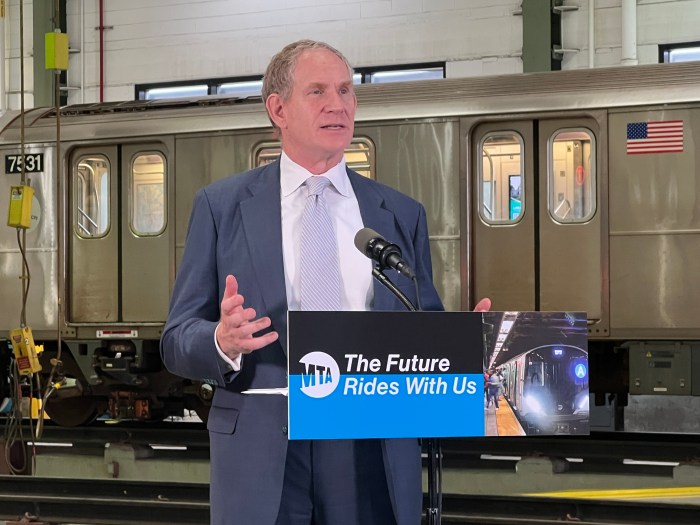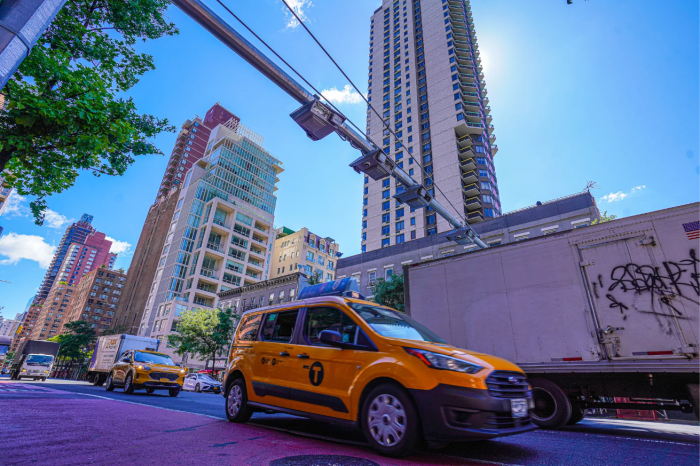
The L train shutdown is official.
The MTA board voted on Monday to approve the contract for the line’s Canarsie Tunnel rehabilitation, locking in a timeline for construction, costs and service interruptions.
L train service to and through Manhattan will close for 15 months during the reconstruction, beginning in April 2019. The contract winners, a joint venture between Judlau Contracting and TC Electric, will begin preliminary work along the line immediately.
With the contract in place, the MTA has pushed back the start of construction from January 2019 to April of the same year. But the agency has also shaved three months off its original proposal for an 18-month shutdown. The full L line is expected to reopen in July 2020.
“We should be held to a very high standard of doing [the L train rehabilitation] quick, doing it efficiently and doing it as inexpensively as we can with as little financial impact to the riding public as possible,” said Fernando Ferrer, the MTA’s acting chairman.
Repairs are needed after tidal surge from superstorm Sandy flooded the 100-year-old Canarsie Tunnel under the East River with millions of gallons of saltwater, causing severe damage.
But the approval of the $477 million contract came with some consternation. Several MTA board members linked Judlau, a Second Avenue subway contractor, to delays on that project as well as the ongoing rebuild of the 1 train’s Cortlandt Street station.
The agency was criticized over the last few weeks for choosing Judlau for another contract despite the contractor’s recent work.
Judlau has successfully completed similar rehabilitations of Sandy-damaged subway tunnels, Ferrer noted. The contractor touted its work on those projects in a statement and pledged to meet the L train timeline.
If the contracting team fails to meet the July 2020 deadline for reopening the L train’s Canarsie Tunnel, it would be fined $410,000 per each additional day of work. There is also an additional $15 million allotted on top of the contract that could be used to incentivize an early completion.
About 225,000 daily L train riders use the line to travel between boroughs. Shrinking the shutdown by three months meant little on Monday to New Yorkers, transit advocacy and business leaders who are still anxiously waiting to hear how the city and the MTA, a state-run agency, will collaborate on alternatives during the service outage.
“If the MTA can shorten the shutdown period, that’s great, but it doesn’t absolve them of the responsibility to make riders’ lives tolerable during the construction,” said John Raskin, the executive director of the Riders Alliance, in a statement.
Several planning firms and advocacy groups have proposed closing corridors like Manhattan’s 14th Street or Brooklyn’s Grand Street to car traffic, to create a system of fast-moving shuttle buses for L train riders. Andrew Hoan, president of the Brooklyn Chamber of Commerce, said that shuttle buses alone “won’t cut it.”
“The L train is packed. By the time it gets to Bedford Avenue, it’s sardines-ville,” said Hoan, adding that he appreciates the MTA’s commitment to rebuild the tunnel. “We have ferry service coming and bike share. … We need that, multiplied by two or three.”
During the shutdown, the MTA will increase service on the J, G and M lines. It’s working with the city on a more comprehensive plan. Drafts of that proposal could come as soon as late spring.
“We’re going to do real work with the MTA to figure out how to compensate for [the L train shutdown],” said Mayor Bill de Blasio at an unrelated news conference on Monday. “They already, I think, have some good plans for diverting riders to other lines and providing bus service. We’re going to look at what we can do to assist in that and make it as smooth as possible.”
Two New York DJs eating tacos together at food truck parked off the L’s Bedford Avenue station — one artist from Manhattan, the other from Brooklyn — represented the dichotomy between the two boroughs on the closure.
“New Yorkers, when there are shifts like this, they figure out how to get around,” said Eric Isles, 27, the DJ from the East Village.
But Tiba Sterlins, 27, the DJ from Bedford-Stuyvesant, countered: “There’s going to be extreme chaos,” he said, fearing the L train riders who will flock to his station serving the J, M and Z trains. “The J train is going to be done — it’s already done.”
Neither Sterlins, Isles nor residents living at the end of the L line had confidence that the MTA and the city would provide sufficient options during the shutdown. Janet Bent, 52, a caregiver from Canarsie who travels several times a week to Manhattan for work, said she worries about how much longer her one-hour commute will take.
“It’s the only train we have here,” Bent said. “So it’s more than important, it’s a necessity.”
L train shutdown by the numbers
-15 months, from April 2019 to July 2020
-$477 million contract for Judlau Contracting and TC Electric
-225,000 daily riders use the line between Brooklyn and Manhattan

































